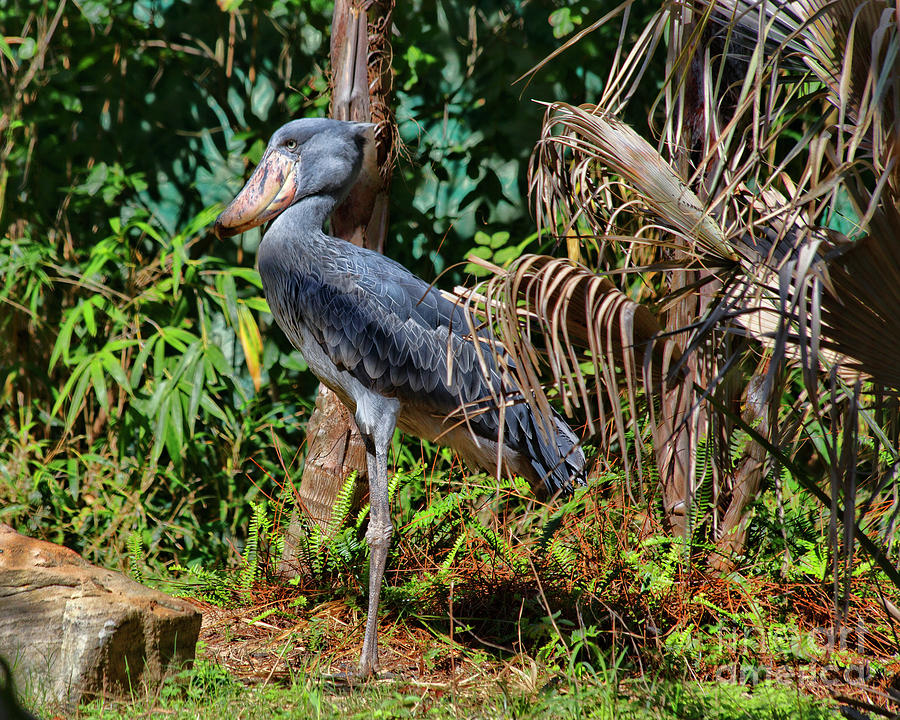

The shoebill can take advantage of the disturbed fish in the water and strike. A shoebill can often benefit from the presence of hippos, which disturb fish, and bulldoze paths through swamps. They are known to often behead their prey, before consuming whole.

The razor sharp edges of it’s beak, allow it to decapitate their prey quickly. Their beaks can reach up to 24cm in length and 20cm (7.4 to 9.4 inches) in width, which helps them hunt for fish or snakes as long as 3.2 feet (1m) in size. They have the 3rd longest beak in the world, which enables them to hunt extremely large prey, even baby crocodiles.

Only larger stalk species have slower flapping than the shoebill.ģ. The shoebill’s flapping when flying is one of the slowest of any birds, at a mere (approx.) 150 flaps per minute. They are truly unique and beautiful birds.Ģ. They have striking pale, blue-eyed genes, which can make them appear not really real. They can also be extremely cute, and almost ‘cartoon-like’. If you hadn’t noticed, they are unusual and almost dinosaur like in appearance.Īt times, and from certain angles, they can appear rather menacing, peering down their long, razor sharp beak, with a hook at the tip. Shoebill have specific habitat requirements for breeding, nesting and hunting, and their swamps and marshes are gradually being transformed into agricultural land, or pastures for cattle grazing. The shoebill population is particularly difficult to evaluate with accuracy, due to where they habitat and their elusive nature, but it has declined – with estimates between 5,000 – 8,000 in total.īirdLife International has classified it as vulnerable, due to habitat destruction, disturbance and hunting. It has broad wings, with an average wingspan between 7.5 – 8.5 feet (2.2 – 2.6m). The shoebill averages between 3.5 – 4.5 feet (1 – 1.4 meters) in height, and weighs between 9 – 15.5 pounds (4 – 7 kg). The shoebill is an extremely tall bird, with long spindly legs, that allows it to stand in the shallows of swamps and on aquatic vegetation, while hunting for food. However, it does occasionally hunt and eat other prey, such as frogs, lizards, watersnakes, snails and rodents. The shoebill is piscivorous, primarily eating fish – in particular lungfish, as well as bichirs, tilapia and catfish. Shoebill were previously thought of as storks, but genetic research has re-classified them as members of the order Pelecaniformes and family Balaenicipitidae, which are large waterbirds, genetically closer to pelicans and herons. Occasionally frogs, snakes, snails, rodents & even baby crocodiles. It’s distribution is often close to the presence of papyrus vegetation, and lungfish.Įast Africa – Uganda, Sudan, eastern Democratic Republic of the Congo, Zambia, Kenya, Ethiopia, Botswana and Tanzania. Shoebill inhabit East Africa, in freshwater swamps and marshes of Uganda, Sudan, eastern Democratic Republic of the Congo, Zambia, Kenya, Ethiopia, Botswana and Tanzania. They are sometimes referred to as ‘ Whalehead‘, for obvious reasons. The shoebill is a large, elusive, stalk-like bird with an almost prehistoric appearance, due to its oversized shoe-shaped beak.


 0 kommentar(er)
0 kommentar(er)
